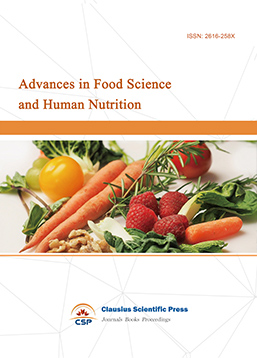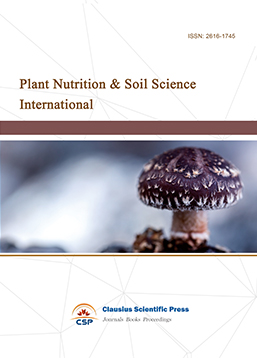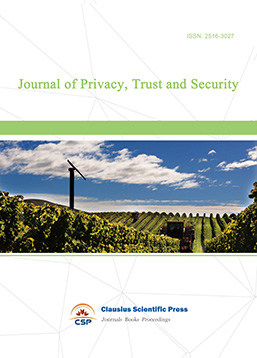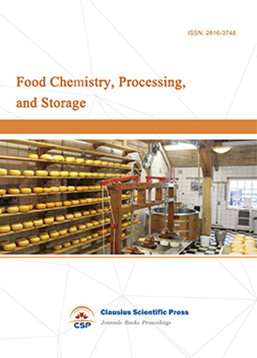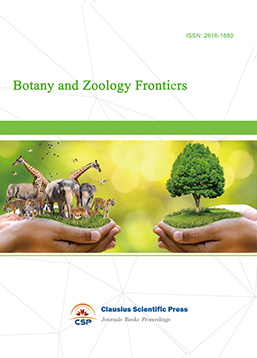Control of Drop Size Distribution Through Emulsions
DOI: 10.23977/jmcs.2022.010102 | Downloads: 27 | Views: 3352
Author(s)
Dongyue Wang 1
Affiliation(s)
1 Experimental High School Attached to Beijing Normal University, Beijing, China
Corresponding Author
Dongyue WangABSTRACT
Modern agriculture has been relying on the use of liquid pesticides and fertilizer and these solutions are usually sprayed onto crops. Whether spraying by hand, drones or airplanes, there can be a substantial amount of liquid droplets that are too small and drift by currents in the air away from the targeted crop. Therefore, controlling drop size distribution of sprayed droplets is important for enhancing the efficiency of agrochemical applications. In previous studies, researchers controlled droplet size by altering the nozzle pressure [1], and pressure-and-nozzle combinations [2], as well as the viscoelasticity of the liquid by adding polymers [3]. In this paper, the fluid mechanical response of the liquid to be sprayed is adjusted by formulating oil-and-water emulsions. The presence of such oil-water interfaces introduces a viscoelastic response through the restoring force of surface tension. By analyzing the drop size distribution as a function of the volume fraction of oil in water, it is found that the distributions can be shifted toward maximal size of droplets. In this work, using silicone oil-water combinations, the maximum drop size occurred in the vicinity of 40% by volume of silicone oil.
KEYWORDS
Surface tension, water, drop distribution, silicon oil, edge computingCITE THIS PAPER
Dongyue Wang, Control of Drop Size Distribution Through Emulsions. Journal of Modern Crop Science (2022) Vol. 1: 4-23. DOI: http://dx.doi.org/10.23977/jmcs.2022.010102.
REFERENCES
[1] Giles, D. Ken. “INDEPENDENT Control of Liquid Flow Rate and Spray Droplet Size from Hydraulic Atomizers.” Atomization and Sprays, Begel House Inc., www.dl.begellhouse.com/journals/6a7c7e10642258cc,601fb9a60bd6e0c7,
4caca4f30bb4d1df.htm l.
[2] Nuyttens, David & Schampheleire, M. & Verboven, Pieter & Brusselman, Eva & Dekeyser, Donald. (2009). Droplet Size and Velocity Characteristics of Agricultural Sprays. TRANSACTIONS OF THE ASABE. 52. 1471-1480. 10.13031/2013.29127.
[3] Riseman, Andrew, and John M. Frostad. “Quantifying the Effect of Extensional Rheology on the Retention of Agricultural Sprays.” AIP Publishing, AIP Publishing LLC AIP Publishing, 1 Mar. 2021, aip.scitation.org/doi/10.1063/
5.0038391?af=R&feed=most-recent.
[4] Penfield, Kevin, et al. “Stp1610.” ASTM International - Standards Worldwide, ASTM International, www.astm.org/DIGITAL_LIBRARY/STP/PAGES/STP161020170208.htm.
[5] Wang, Fengyan, et al. “Factors Influencing Agricultural Spray Deposit Structures on Hydrophobic Surfaces.” Colloids and Surfaces A: Physicochemical and Engineering Aspects, Elsevier, 26 May 2018, www.sciencedirect.com/
science/article/abs/pii/S0927775718304503.
[6] Edge, R. D. “Surface Tension.” The Physics Teacher, vol. 26, no. 9, 1988, pp. 586–587., doi:10.1119/1.2342636.
[7] Alexander, Robert L. “Viscoelastic Models in the Physics Curriculum.” The Physics Teacher, vol. 3, no. 8, 1965, pp. 350–353., doi:10.1119/1.2349207.
[8] https://www.google.com/url?sa=i&url=https%3A%2F%2Fwww.farmpractices.com%2Fagricultural-sprayers&psig=
AOvVaw1Dd1j_NXRK66XCXUlfuH9U&ust=1631589863696000&source=images&cd=vfe&ved=0CAkQjRxqFwo
TCKiZ14SA-_ICFQAAAAAdAAAAABAD
[9] https://www.google.com/url?sa=i&url=https%3A%2F%2Fwww.producer.com%2Fcrops%2Fbroad-acre-drone-spray
ing-unlikely%2F&psig=AOvVaw0ofl6pECsgzQP-w4mO1bMP&ust=1631589914855000&source=images&cd
=vfe&ved=0CAkQjRxqFwoTCLiU_pyA-_ICFQAAAAAdAAAAABAD
[10] Vinckier, I., et al. “Relationship between Rheology and Morphology of Model Blends in Steady Shear Flow.” The Society of Rheology, The Society of RheologySOR, 1 July 1996, sor.scitation.org/doi/10.1122/1.550800.
[11] https://www.iso.org/standard/36631.html
| Downloads: | 666 |
|---|---|
| Visits: | 48185 |

 Download as PDF
Download as PDF